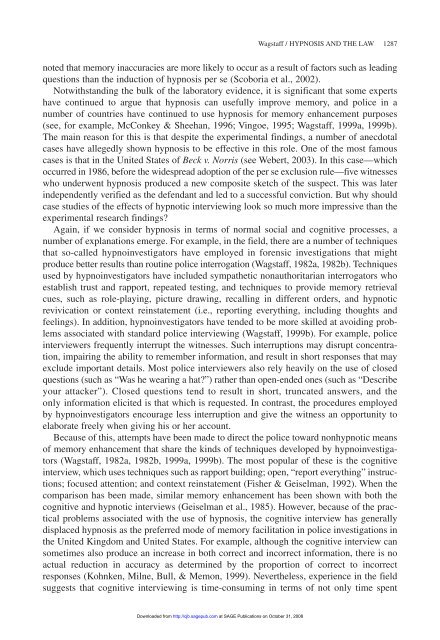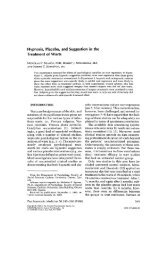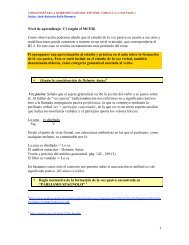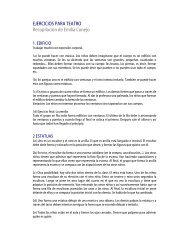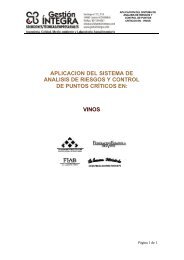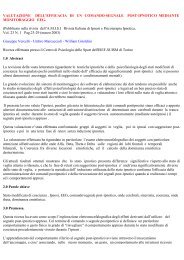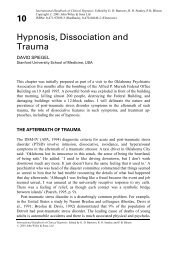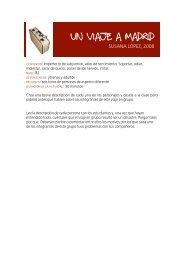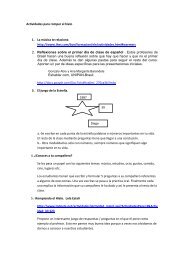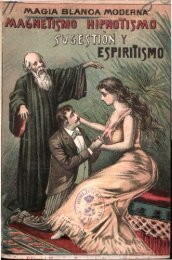Hypnosis and the Law: Examining the Stereotypes
Hypnosis and the Law: Examining the Stereotypes
Hypnosis and the Law: Examining the Stereotypes
Create successful ePaper yourself
Turn your PDF publications into a flip-book with our unique Google optimized e-Paper software.
Wagstaff / HYPNOSIS AND THE LAW 1287<br />
noted that memory inaccuracies are more likely to occur as a result of factors such as leading<br />
questions than <strong>the</strong> induction of hypnosis per se (Scoboria et al., 2002).<br />
Notwithst<strong>and</strong>ing <strong>the</strong> bulk of <strong>the</strong> laboratory evidence, it is significant that some experts<br />
have continued to argue that hypnosis can usefully improve memory, <strong>and</strong> police in a<br />
number of countries have continued to use hypnosis for memory enhancement purposes<br />
(see, for example, McConkey & Sheehan, 1996; Vingoe, 1995; Wagstaff, 1999a, 1999b).<br />
The main reason for this is that despite <strong>the</strong> experimental findings, a number of anecdotal<br />
cases have allegedly shown hypnosis to be effective in this role. One of <strong>the</strong> most famous<br />
cases is that in <strong>the</strong> United States of Beck v. Norris (see Webert, 2003). In this case—which<br />
occurred in 1986, before <strong>the</strong> widespread adoption of <strong>the</strong> per se exclusion rule—five witnesses<br />
who underwent hypnosis produced a new composite sketch of <strong>the</strong> suspect. This was later<br />
independently verified as <strong>the</strong> defendant <strong>and</strong> led to a successful conviction. But why should<br />
case studies of <strong>the</strong> effects of hypnotic interviewing look so much more impressive than <strong>the</strong><br />
experimental research findings?<br />
Again, if we consider hypnosis in terms of normal social <strong>and</strong> cognitive processes, a<br />
number of explanations emerge. For example, in <strong>the</strong> field, <strong>the</strong>re are a number of techniques<br />
that so-called hypnoinvestigators have employed in forensic investigations that might<br />
produce better results than routine police interrogation (Wagstaff, 1982a, 1982b). Techniques<br />
used by hypnoinvestigators have included sympa<strong>the</strong>tic nonauthoritarian interrogators who<br />
establish trust <strong>and</strong> rapport, repeated testing, <strong>and</strong> techniques to provide memory retrieval<br />
cues, such as role-playing, picture drawing, recalling in different orders, <strong>and</strong> hypnotic<br />
revivication or context reinstatement (i.e., reporting everything, including thoughts <strong>and</strong><br />
feelings). In addition, hypnoinvestigators have tended to be more skilled at avoiding problems<br />
associated with st<strong>and</strong>ard police interviewing (Wagstaff, 1999b). For example, police<br />
interviewers frequently interrupt <strong>the</strong> witnesses. Such interruptions may disrupt concentration,<br />
impairing <strong>the</strong> ability to remember information, <strong>and</strong> result in short responses that may<br />
exclude important details. Most police interviewers also rely heavily on <strong>the</strong> use of closed<br />
questions (such as “Was he wearing a hat?”) ra<strong>the</strong>r than open-ended ones (such as “Describe<br />
your attacker”). Closed questions tend to result in short, truncated answers, <strong>and</strong> <strong>the</strong><br />
only information elicited is that which is requested. In contrast, <strong>the</strong> procedures employed<br />
by hypnoinvestigators encourage less interruption <strong>and</strong> give <strong>the</strong> witness an opportunity to<br />
elaborate freely when giving his or her account.<br />
Because of this, attempts have been made to direct <strong>the</strong> police toward nonhypnotic means<br />
of memory enhancement that share <strong>the</strong> kinds of techniques developed by hypnoinvestigators<br />
(Wagstaff, 1982a, 1982b, 1999a, 1999b). The most popular of <strong>the</strong>se is <strong>the</strong> cognitive<br />
interview, which uses techniques such as rapport building; open, “report everything” instructions;<br />
focused attention; <strong>and</strong> context reinstatement (Fisher & Geiselman, 1992). When <strong>the</strong><br />
comparison has been made, similar memory enhancement has been shown with both <strong>the</strong><br />
cognitive <strong>and</strong> hypnotic interviews (Geiselman et al., 1985). However, because of <strong>the</strong> practical<br />
problems associated with <strong>the</strong> use of hypnosis, <strong>the</strong> cognitive interview has generally<br />
displaced hypnosis as <strong>the</strong> preferred mode of memory facilitation in police investigations in<br />
<strong>the</strong> United Kingdom <strong>and</strong> United States. For example, although <strong>the</strong> cognitive interview can<br />
sometimes also produce an increase in both correct <strong>and</strong> incorrect information, <strong>the</strong>re is no<br />
actual reduction in accuracy as determined by <strong>the</strong> proportion of correct to incorrect<br />
responses (Kohnken, Milne, Bull, & Memon, 1999). Never<strong>the</strong>less, experience in <strong>the</strong> field<br />
suggests that cognitive interviewing is time-consuming in terms of not only time spent<br />
Downloaded from<br />
http://cjb.sagepub.com at SAGE Publications on October 31, 2008


